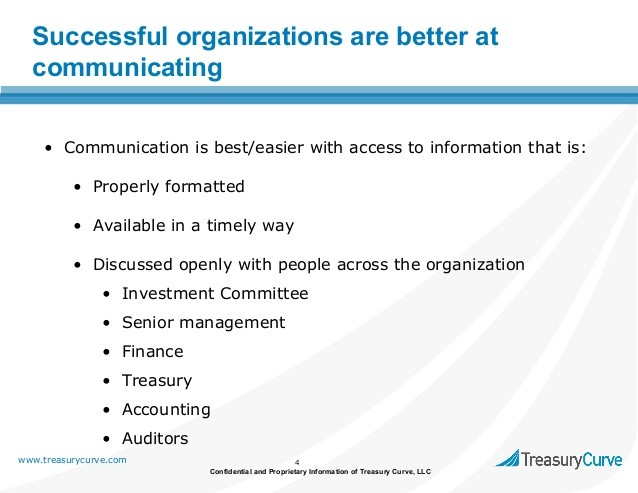GFOA Treasury Management
Post on: 4 Июнь, 2015 No Comment

How to Use Collateralization to Safeguard Public Deposits
By M. Corinne Larson, CTP
The safety of public funds deposited with banks and other depository institutions has been a primary concern of government finance officers. Governments typically entrust depositories with millions of dollars in checking accounts, savings accounts, and certificates of deposit. Hundreds of depository institutions failed in the late 1980s and early 1990s. These bank failures highlighted the need to pay careful attention to protecting government deposits beyond the $100,000 limit provided by the Federal Deposit Insurance Corporation (FDIC).
Collateralization Practices. Most states have enacted statutes that either require or permit depositories to pledge collateral securities to secure public deposits. Typically, high-quality government securities (such as U.S. Treasury obligations, federal agency securities, and municipal bonds) are pledged to protect those funds. When a collateralization program is used in conjunction with other risk-control policies and techniques, finance officers can significantly improve the safety of their deposits.
How Collateralization Works
Source: Banking Services: A Guide for Governments. GFOA.
There is a five-step process for establishing a collateralization program.
Step 1: Review State Collateralization Laws. Finance officials should review their state statutes and discuss the law with local legal counsel. In addition, finance officials must make sure that each step outlined in the statute is carefully followed. The state statute should be considered the minimum requirement. Finance officials may wish to exclude eligible collateral or institute higher collateralization ratios for securities that are long-term, illiquid, or have a lower credit rating.
Step 2: Identify Depository Risk Exposure. Public officials often find that demand deposits are difficult to collateralize because of fluctuations in cash flow. Some governments use sweep accounts or other similar vehicles to ensure that funds are automatically invested in repurchase agreements or money market mutual funds on an overnight basis. If a block of collateral securities is used to protect demand deposits, the finance official should study the maximum risk exposure that occurs during cash flow peaks. Governments whose peak cash balances significantly exceed their collateral levels should enact policies that acknowledge this problem and require their banks to adjust the collateral accordingly.
Step 3: Establish a Written Depository Collateralization Agreement. In 1995, the GFOA Committee on Cash Management developed a sample security agreement and custodial trust agreement for governments to use for collateralizing deposits. (Both of these documents are in the new GFOA publication An Introduction to Collateralizing Public Deposits .) GFOA encourages governments to develop and enter into depository collateralization agreements even if state law assigns this responsibility to the state. A written agreement helps assure enforcement of collateral protections. Such agreements should include the following elements:
- Funds to be Collateralized. This section should address demand and time deposit accounts and should discuss the overlap or offset of federal deposit insurance.

- A Federal Reserve Bank or its branch office. Public investors must understand that the Fed is the bankers bank. The Feds client is the depository, not the government jurisdiction seeking collateral. However, Federal Reserve safekeeping procedures can provide for independent control of collateral, and frequently two signatures are required before assets can be released in an event of default. (Note: Federal agencies and the Governmental Accounting Standards Board have stated that they interpret this form of deposit pledging to be the equivalent of delivery to the investor.)
Third-party collateral safekeeping can be arranged at another custodial facility. Most banks maintain correspondent relationships with independent commercial banks that can hold a governments deposit collateral in safekeeping. A written safekeeping agreement should document this safekeeping relationship. Such third-party safekeeping assures independence and reduces the chance for fraud. However, this arrangement may be more costly than safekeeping at a Federal Reserve Bank. Generally, third-party safekeeping should be held in a trust department through book-entry at the Federal Reserve (unless physical securities are involved).
The trust department of a commercial bank can hold the collateral in safekeeping. This procedure is usually cost-effective, but should be substantiated by a written trust agreement as a way to discourage fraud and to ensure the existence of an impenetrable boundary between the banks operations and trust departments.
Step 4: Establish Effective Safekeeping Procedures. The process of developing a suitable collateralization agreement requires considerable time, legal review, and discussion with interested parties. The three primary methods of safekeeping are discussed above in Step 3, and may require remedial action if current practices are deficient.
Step 5: Prepare for Financial Reporting Disclosures. In March 2003, the Governmental Accounting Standards Board (GASB) issued Statement No. 40, Deposit and Investment Risk Disclosures, an amendment of GASB Statement No. 3 (for a summary of this statement see www.gasb.org ). GASB Statement No. 40 eliminates many of the cumbersome reporting requirements of Statement No. 3, although governments must still disclose depository risk for deposits that are not insured or properly collateralized. In their annual financial statements, governments must report deposits that are uninsured and uncollateralized or if the collateral securities are held by the same financial institution holding the deposits, according to GASB Statement No. 40. Some governments may decide to avoid financial statement disclosures that are difficult to explain and will therefore elect to provide for third-party delivery of deposit collateral. As noted in Step 3, this can be accomplished efficiently through the Federal Reserve System.
Summary. Deposit collateralization is one of several important risk control procedures that should be used by prudent public cash managers. Although the process of establishing a sound collateral program may be complex, the effort is worthwhile. It may also be desirable to have stronger collateralization requirements than those required by the state statute.
M. Corinne Larson is a vice president with MBIA Asset Management Group and can be reached at 914/765-3505.














